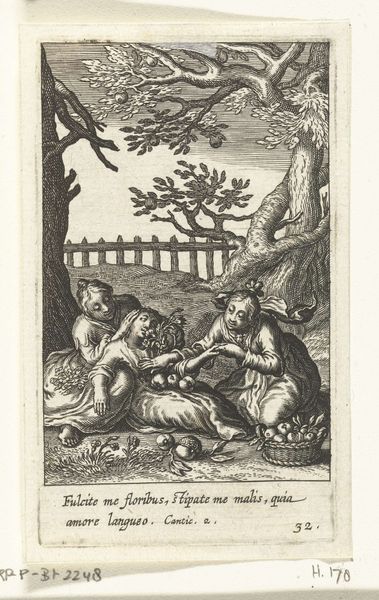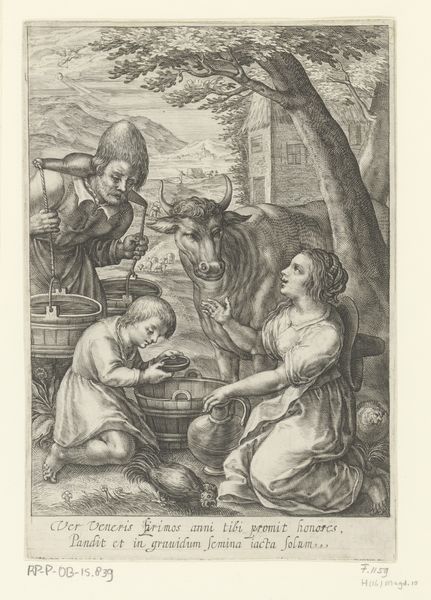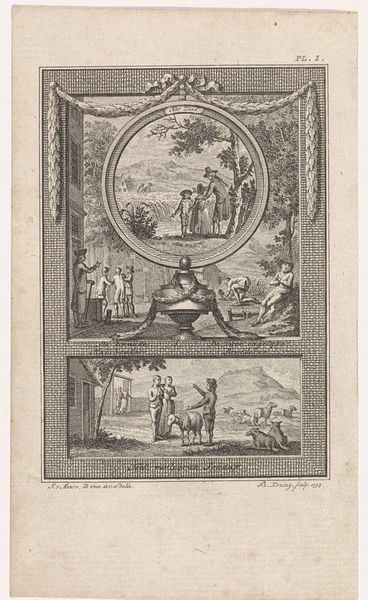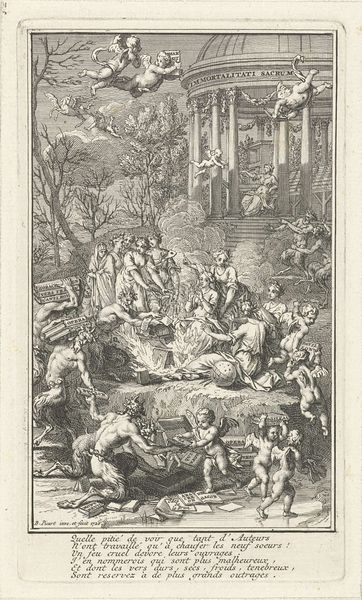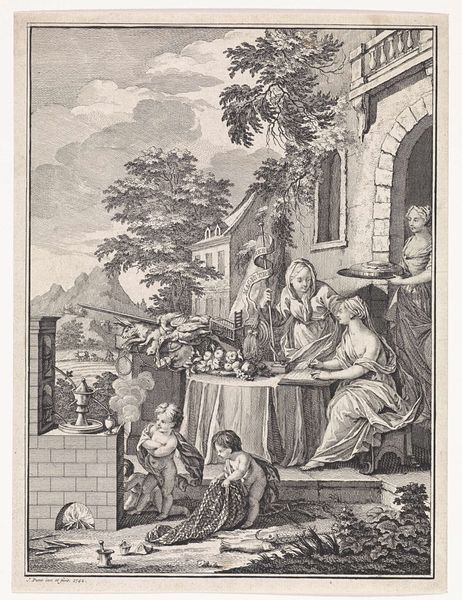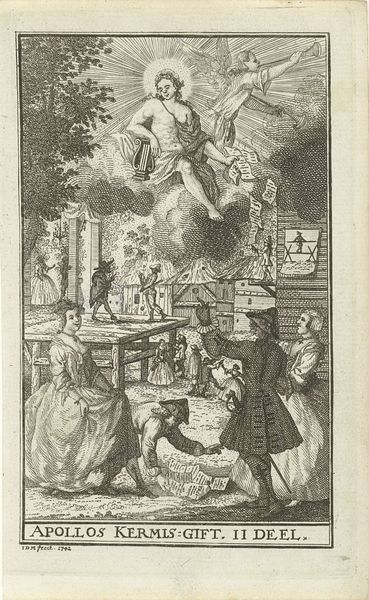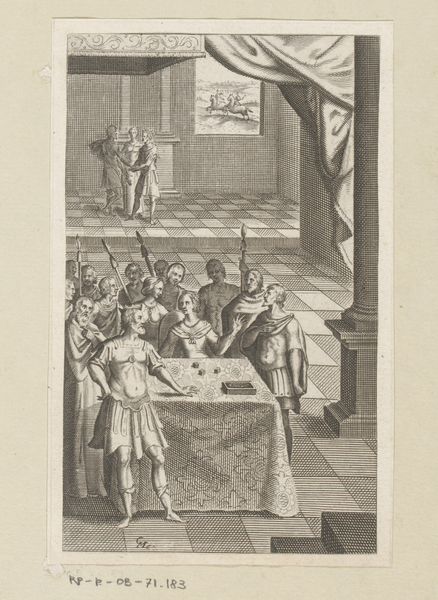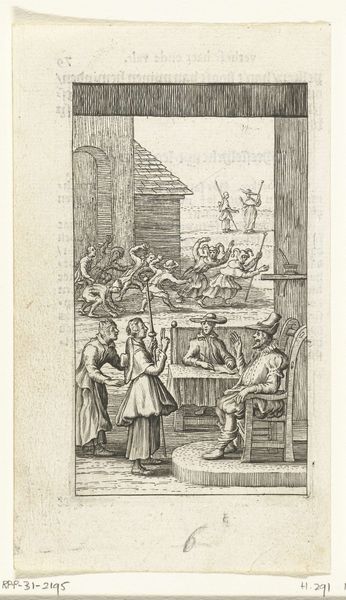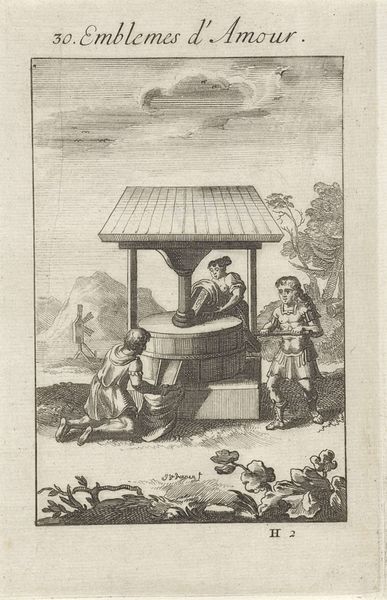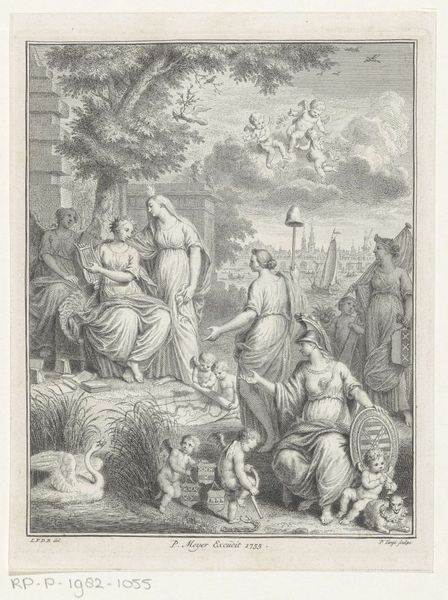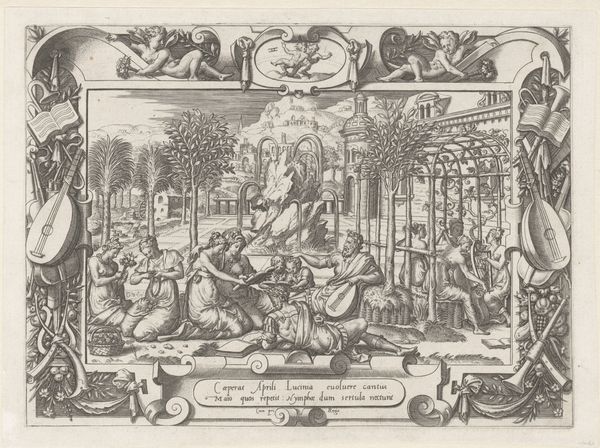
print, engraving
#
portrait
#
narrative-art
# print
#
old engraving style
#
group-portraits
#
pen-ink sketch
#
sketchbook drawing
#
islamic-art
#
genre-painting
#
engraving
#
miniature
Dimensions: height 287 mm, width 190 mm
Copyright: Rijks Museum: Open Domain
Editor: So, this is "Bijeenkomst van Indiase vrouwen," or "Meeting of Indian Women," an engraving from around 1724-1726. It's by Jan Lamsvelt. It feels like a glimpse into a very specific moment, but there's also this layer of, well, I guess it's colonialism because it's a European artist depicting Indian women. What do you see in the materials used here and how that contributes to its meaning? Curator: I'm interested in the mechanics of its creation. We need to consider how printmaking as a process influenced the circulation of imagery and ideas about the "exotic" and the role of labor that produced it. Think about the artist having never been there but having the job to make that. How might this piece been commodified? Editor: I guess it’s interesting to think about how an artwork itself could be considered as almost an anthropological artifact. It's evidence of its creator’s, and therefore the viewer's, assumptions. Does the artist even use certain tools, the kind of paper... Does any of this help? Curator: Precisely! And it all comes down to the economics and systems of artistic production at the time. Was this a one-off piece commissioned by someone specific? Or were multiples produced and sold, allowing it to reach a broader audience, spreading particular ideas about India. Where do you think these papers would’ve come from and how does the kind of circulation determine it’s quality or impact? Editor: It changes everything to consider the role of material in shaping how we interpret art. Thanks. Curator: Thinking through production, circulation, labor… opens up possibilities for interpreting artwork as more than just representations. It reframes them as products of cultural and economic systems.
Comments
No comments
Be the first to comment and join the conversation on the ultimate creative platform.

